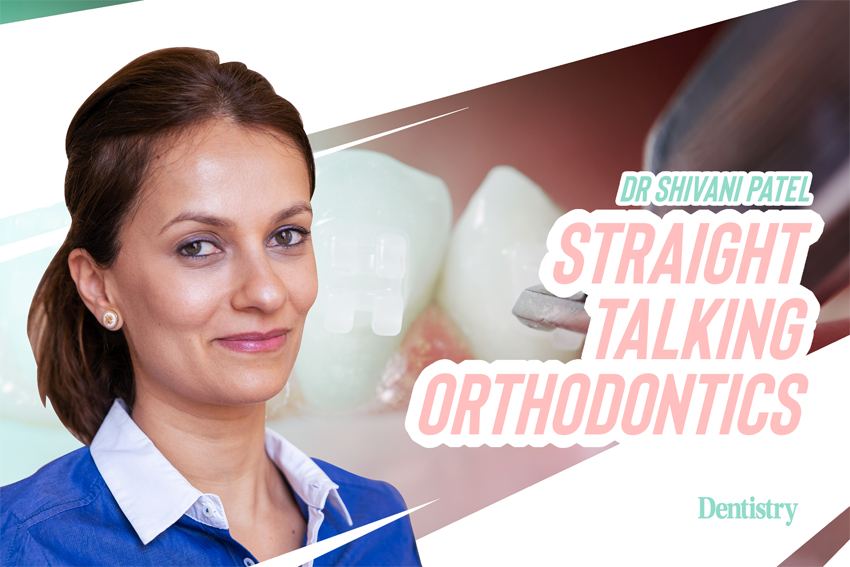
This month Shivani Patel discusses the importance of importance of early orthodontic appointments, the different problems GDPs need to look out for in children and the treatment necessary.
As the demand for orthodontics increases, the more important it is for a greater awareness of orthodontic assessments.
It is important to understand that children should receive an orthodontic assessment early.
This should happen before they become a teenager, or even before they get all of their adult teeth.
Interceptive treatment
Developing issues in the deciduous dentition or the mixed dentition can be fully corrected in 15% of cases or improved in almost 50%. This is done using relatively simple interceptive treatment.
Interceptive treatment can involve the early treatment of occlusal disturbances or the simplification of their future management.
Such intervention is usually done in the mixed dentition. A number of situations include:
- Digit sucking habits
- Delayed eruption of the maxillary central incisor teeth
- Supernumerary teeth
- Early loss of deciduous teeth
- Cross bites
- Crowding
- Large overjet
- Traumatic over bites
- Hypodontia
- Impacted canines and molar teeth.
Digit sucking habits
All digit sucking and dummy sucking habits should be discouraged before the age of six.
At this age, the anterior permanent teeth would not have erupte, so the features of the malocclusion would then remain permanent.
Notably, digit sucking can cause asymmetric anterior open bites, unilateral crossbite and proclination of the upper anterior teeth.
These features can all sometimes spontaneously resolve should the habit cease in the deciduous dentition.
However, if they do not resolve, severe malocclusions can develop. This can affect speech and function which, in some cases, can need jaw surgery to resolve.
Crossbites
Crossbites occur due to narrow upper arches causing a posterior crossbite or anterior crossbite.
This is caused by anterior crowding.
Both of these should be resolved early using simple alignment treatment.
This should be done with removable appliances to prevent wear and tear of the teeth, asymmetric growth and TMJ issues.
Crowding
Crowding is a common issue you see when patients have tooth and jaw size discrepancies.
It can also occur when there has been early loss of deciduous teeth due to dental decay.
If mild, this can be resolved with expansion.
However, if severe and noticed early, it can be resolved with planned serial extractions.
This will allow the orthodontics to be much simpler in the teen years as a result.
Large overjets
Large overjets can be a result of an under-developed lower jaw or due to digit sucking habits. This can result in a skeletal II pattern.
Lower jaw discrepancies can be addressed with growth modification appliances, whether it be the traditional twin block or the MAS by Invisalign.
The function of these devices is mainly 70% effective with tooth movement compared with only 30% with jaw effects.
In addition, they can vastly reduce the severity of the cases if addressed during the growth spurt phase.
As a result, this will make the fixed brace phase easier and perhaps reduce the need for future orthodontic surgery.
Delayed eruption of teeth
Once a tooth is lost, it should erupt within six months of the contralateral partner tooth.
If this takes longer than six – nine months, it should be investigated with a small LCPA X-ray.
This may reveal hypodontia, supernumerary, lack of space, lack of eruption caused by bone, fibrous tissue or a cyst.
Ideally, upper-canine teeth should be palpated at nine years in the buccal sulcus.
Upper 3s should have erupted between 11-12 years, and if this takes any longer please refer them urgently to an orthodontist for an expose and bond.
An expose and bond of upper 3s after 16 years of age greatly reduces the need for alignment.
Deep overbites
Deep overbites are mainly due to short lower face heights.
These can lead to trauma to the palatal and labial gingiva, as well as accelerated wear of the lower incisor edges. This can be easily addressed in growing children with URA and anterior bite planes.
Overbites are super difficult to treat in non-growing adults and even harder when attempted with Invisalign.
In the future, this means that these patients will have unnatural wear of the lower incisor edges. Restorations in the anterior region will need to be done with caution and guarded prognosis.
Midline diastemas
Mildine diastemas in children under the age of 13 years is physiological.
If a midline diastema persists after the upper canines have erupted, the patient should be encouraged to have a frenectomy during brace treatment. This should happen after the space has been closed.
Doing so will reduce the risk of relapse after orthodontics.
Research shows that the scar tissue that forms after the procedure will aid in keeping the space closed.
If the frenectomy is done before the space is closed, then the scar tissue will prevent closure of the space.
Skeletal III
Children who have inherited small upper and large lower jaws are the most difficult to treat.
Since growth is very unpredictable, any early interception usually has little benefit because growth overrides any changes.
It would be advisable for all GDPs to regularly look at their patients mouths for features highlighted above.
In addition, there is no harm in early referral. Interceptive care would greatly reduce the difficulties and commitment required in orthodontic treatment for these children when they are teenagers.
Catch up on previous Straight Talking Orthodontics columns:
Follow Dentistry.co.uk on Instagram to keep up with all the latest dental news and trends.


